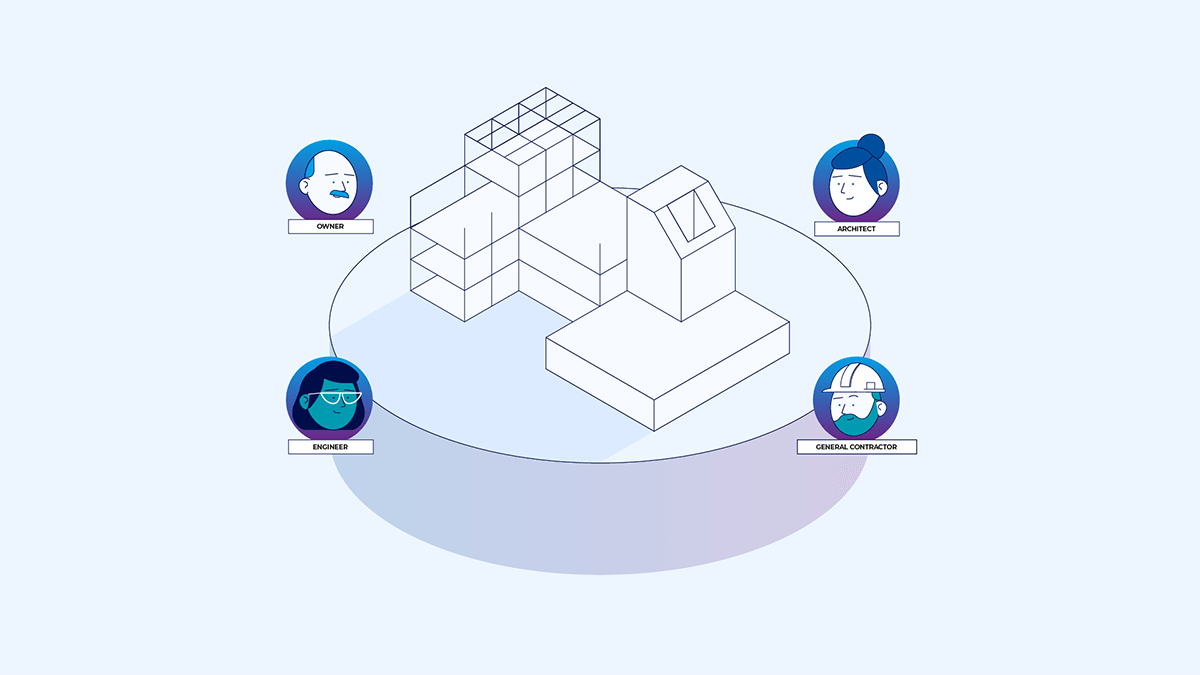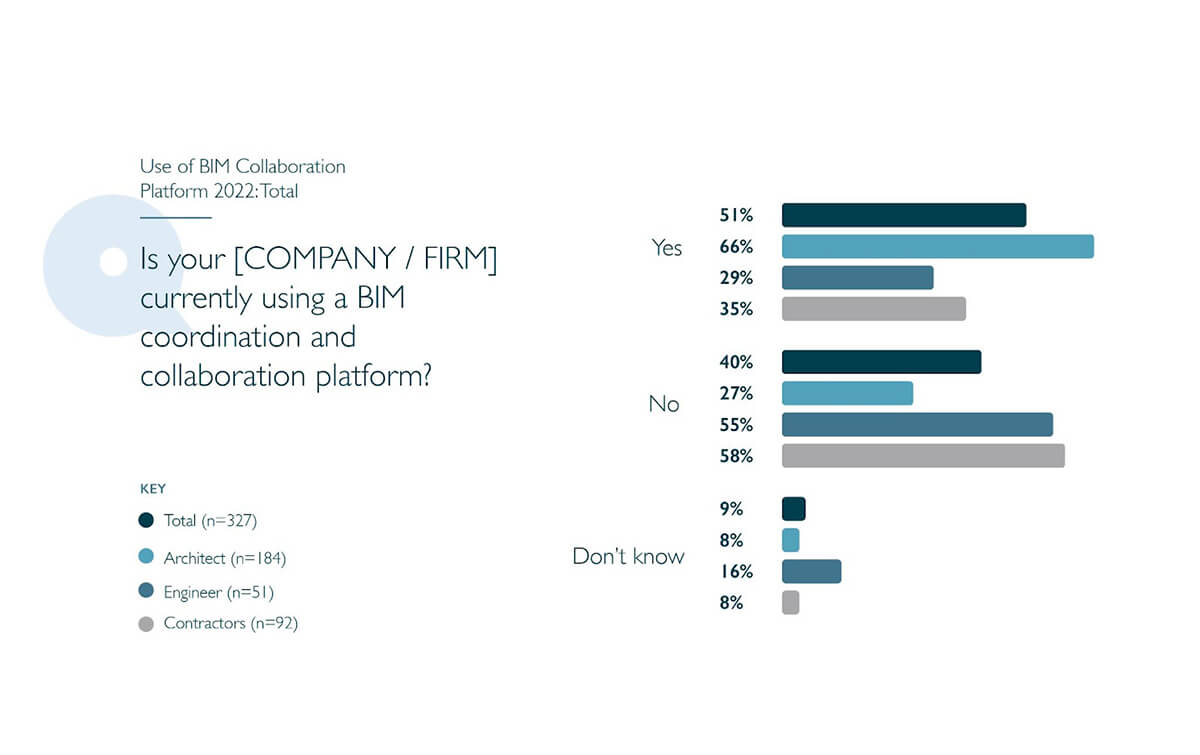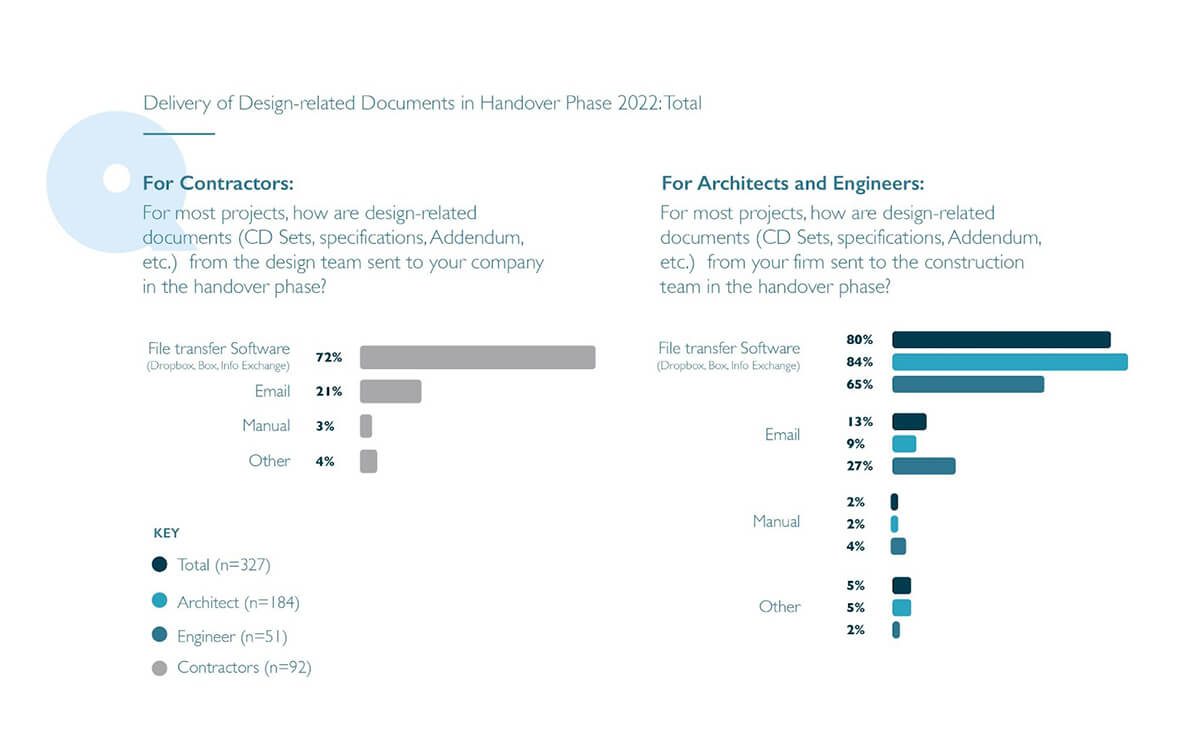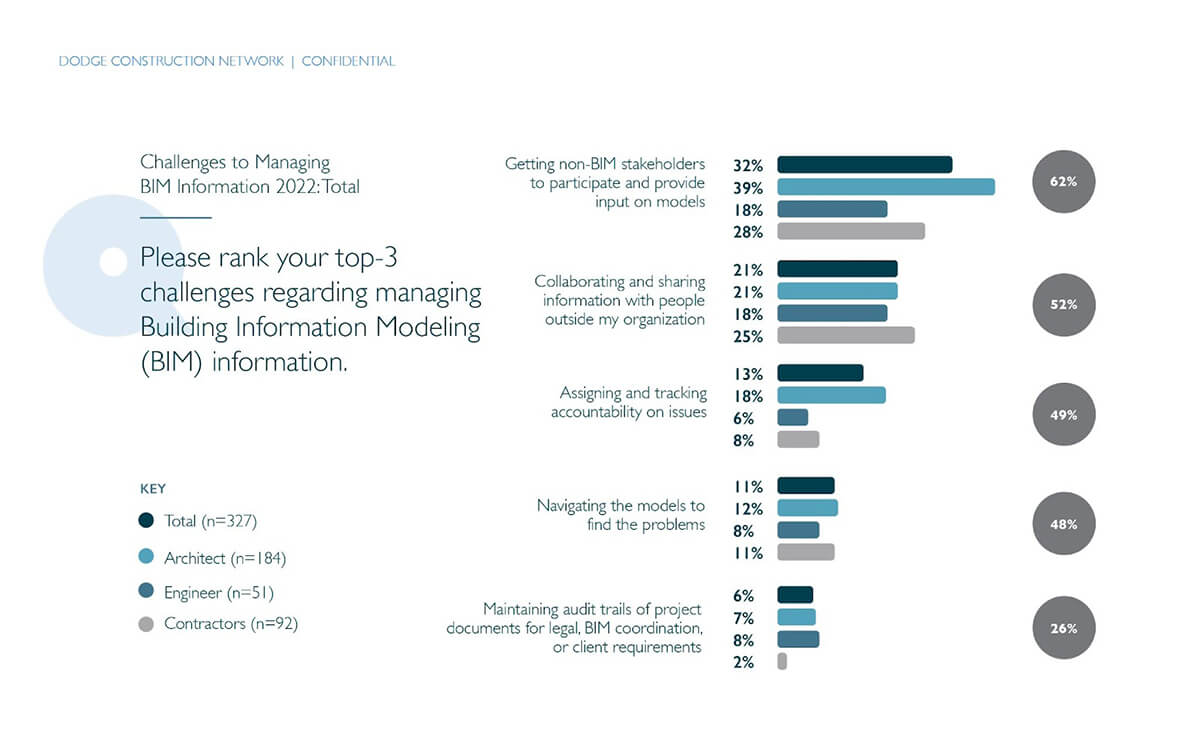BIM
Elevate Your BIM Strategy: Effortless Model Design Data Sharing
Discover how Newforma masters Building Information Modeling by streamlining the sharing of model design data, enhancing collaboration and project efficiency.

Blog / BIM
In Newforma’s study, “Finding Common Ground: The Future of Project Information Management”, we examined challenges related to sharing project information including BIM model and design data. Newforma and the Dodge Construction Network surveyed architects, engineers, and general contractors. The study also included a roundtable panel discussion co-moderated by Newforma and Nathan Wood from the Construction Progress Coalition.
Our survey and roundtable uncovered technological and human obstacles to effectively using Building Information Modeling (BIM), and sharing model data. Although the industry has evolved with the introduction of BIM, our study revealed some inconsistencies related to adoption and use.
According to the National Institute of Building Sciences (NIBS), “BIM is a digital representation of physical and functional characteristics of a facility. As such, it serves as a shared knowledge resource for information about a facility, forming a reliable basis for decisions during its lifecycle from inception onward.” The goal of NIBD-US, “is the establishment of standards needed to foster innovation in processes and infrastructure so that end-users throughout all facets of the industry can efficiently access the information needed to create and operate optimized facilities.”
Even with this definition, there’s still some confusion as to whether Building Information Modeling (BIM) is a process or a technology. Based on the NIBS definition, it is both. A shared knowledge base essentially relies on the process of collaboration and sharing of information across project stakeholders. It also implies that technology infrastructure is the enabler for sharing information.
BIM goes beyond traditional 3D modeling. It includes information such as component relationships, standards, specifications, and performance data. In addition, it relates project information gathered throughout the project lifecycle such as ASI, RFI, and change order data.
BIM provides a way for architects, engineers, contractors, and owners to collaborate via technology. Given that all stakeholders share a common goal of delivering successful projects, it is surprising that BIM is not widespread.
We asked some key questions in our study to try and understand where the roadblocks are with BIM adoption.
We asked several questions related to the state of BIM, starting with a question regarding the deployment of a BIM process. There’s some good news. Many (67%) of our survey respondents indicated that they do have a BIM process. However, it was surprising to learn that only one-third of engineers do. In addition, less than half of general contractors deploy a BIM process.
Our study reveals that most architects (88%) have a BIM process, but other stakeholders on the project lag behind. So, how is information being shared? And is it being shared effectively?
It may be that each stakeholder has their own BIM silos. In our roundtable discussion, Nathan Wood from the Construction Progress Coalition commented,
“The big question is, whose model is it and at what point in time? And is there one model or is it different copies of the model where we think it’s one copy but it’s not? Who has the contractual obligation to maintain that model? There are still a lot of unknowns.”
We also asked if they have BIM software. The responses to this question were similar. Although most architects (66%) have a BIM coordination platform, only one-third of engineering and general contractors report that they have this type of technology in place.
We asked survey participants how they are sharing design-related documents in the handover phase. File transfer software was the top answer. Surprisingly, some respondents are also emailing.
Although file transfer software is an efficient way to share design documents, it’s not designed to be a collaboration platform. We continued our line of questioning to better understand the main challenges of managing BIM documents.
We asked survey participants to rank their top three challenges for managing Building Information Modeling (BIM).
The highest-ranking net top three response was getting non-BIM stakeholders to participate and provide input on models. This isn’t surprising, given that non-BIM stakeholders most likely do not have a BIM process or a collaboration platform. Architects ranked this higher than their engineering and contractor counterparts (39% vs. 18% and 28% respectively). Collaborating and sharing information with people outside their organization also ranked high.
Sixty-two percent of respondents (net top three rankings) say the key obstacle to managing BIM data is convincing non-BIM stakeholders to take part and provide input. Our roundtable panel provided some insight as to why this may be a problem. Access and security were two major themes.
Participation in the BIM process requires access to information. However, if software applications require a license to access BIM data, this may be an issue. Roundtable participant Michael Finley from architecture and engineering firm RS&H shared: “As the industry moves into more user type licensing, assigned licensing, or cloud-based licensing, it becomes more problematic because companies are having to purchase licenses in order to collaborate with the system that we use.”
In addition to licensing, access related to security also remains a barrier.
Roundtable participant Connie Thorne from Hargrove Engineering explains, “We often must go through our IT group, or some sort of security protocols to make sure that everybody has the right access. As project teams change throughout the longer projects, we have to update that access. It is constant change and it’s hard to keep up with it. When we are talking real-time collaboration with people outside of our company, it gets a lot more complicated.”
Over half of respondents report cited issues related to sharing model data with stakeholders outside the organization. This is where the “WHO”, “WHY” and “WHEN” components of sharing model data come into play. Our roundtable panel uncovered obstacles related to expectation setting around how the model data will be used. Determining up front what model information is needed by who and why is key.
Roundtable participant, Donovan Wattier from leading architecture firm HDR shared, “When we look back at how BIM has evolved, 3D really helped us start to visualize spaces and visualize volumes and that helped us improve our deliverables. And then we start to load up on more content and data to make our production quicker, easier, faster, and more accurate. But at the same time, we have a contractor and owner running alongside, looking at our model, going, ‘Hey, that’s valuable information. Can we look at that? Can we have that? Can we use that?’ And now we find ourselves handing over the model, which at one time was just basically our production tool.”
Donovan also explains, “It is not only trust, but it’s also expectations. If you know at the beginning of the job that I’m handing this over to the contractor, and I’m handing it over to the owner, you know that there are certain aspects that have to be in alignment with their expectations of how they’re going to use it.”
There may be liability concerns with sharing information that is not “fully baked”. But having a discussion with all stakeholders on how the information will be used may resolve some of these issues.
Roundtable participant Dan Smolilo from the general contractor firm Walsh Group explains, “one of the challenges is the transparency issue between designers and builders. Whenever we go into the modeling component, it’s, ‘here’s our model, and your assets, and you are liable for anything that’s wrong in the model that we might have messed up.’ Which is fine. We’ll take on that risk.”
Technology had made advances to help break down collaboration barriers. For example, Newforma has addressed many of the challenges of sharing project information through its Connector strategy. With Newforma Project Center’s Autodesk BIM 360 Connector and Autodesk Construction Cloud (ACC) Connector, you can share BIM files (Autodesk Docs) with your entire project team. External team members can access design files via Newforma Project Center’s Information Exchange. This enables external team members who may not have license access to the architect’s BIM environment to access the files.
In addition, Newforma’s platform provides the AECO Industry with BIM collaboration that empowers project teams with better coordination workflows.
Newforma delivers a central hub for all coordination information from design to construction. It is an easy-to-learn and adopt BIM/VDC (Virtual Design and Construction) cloud-based coordination platform. It works with day-to-day BIM authoring tools and other AECO software notably analytics, automation, checking, construction management, field, and visualization platforms. Right from the web viewer, you now know who’s going to fix a clash – how critical the issue is – what you had agreed on – who’s taking care of the RFI – and most importantly, that you’ll be able to deliver a BIM that’s reliable and ready to build from.
Read Part Two of our blog, Advancing BIM, to learn more about how to effectively communicate and manage model clashes!



